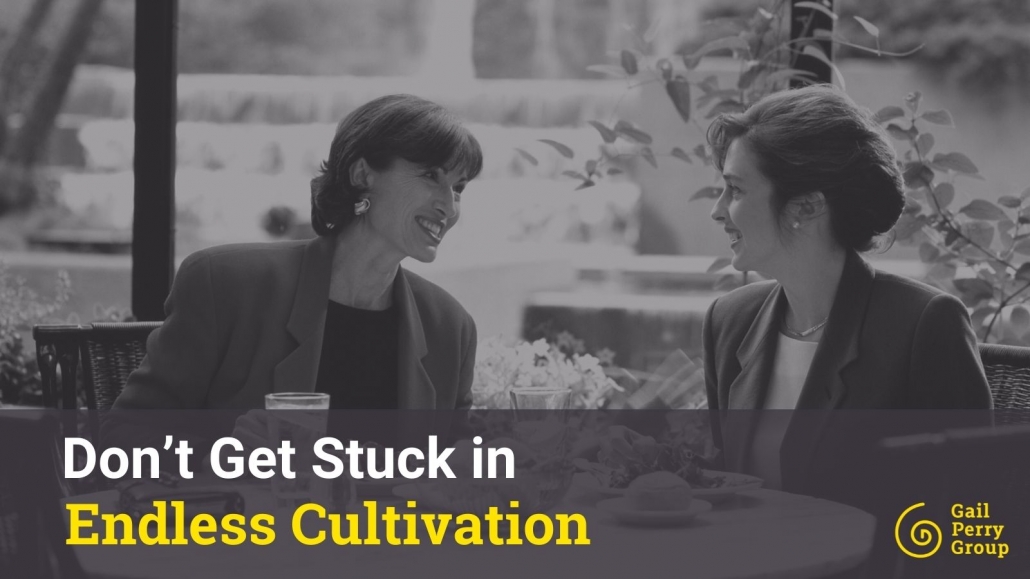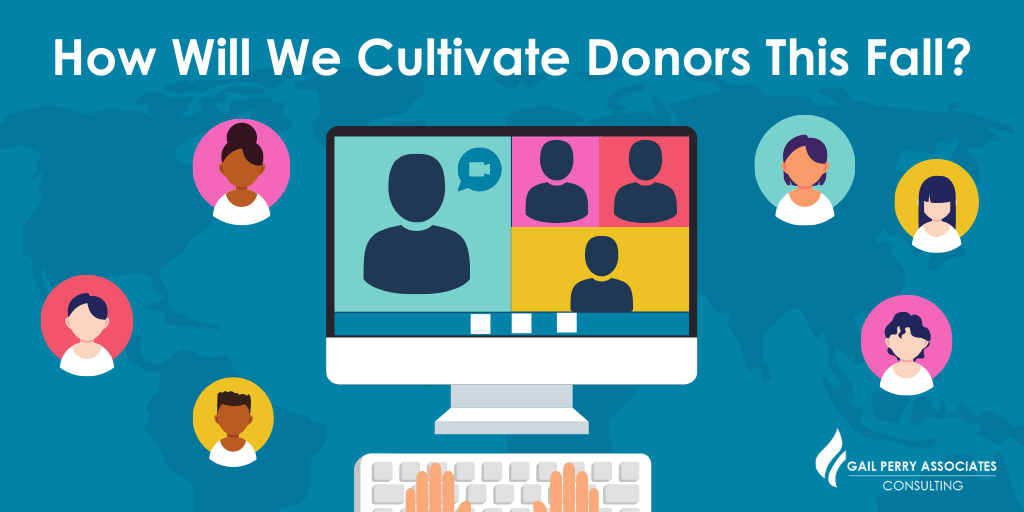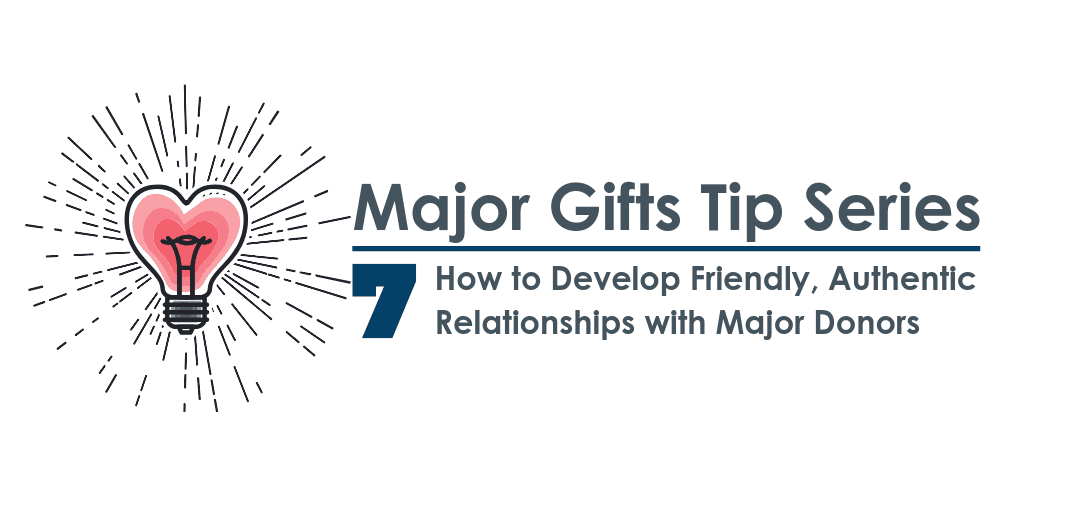
In early November, we had a transformative roundtable discussion – Navigating the “Big Ask” in Challenging Times.
You had so many burning questions during and after that webinar about cultivating meaningful relationships with your donors, navigating the tricky waters of meeting requests, addressing donor concerns, and even reigniting the spark with lapsed supporters.
Beth Ann Locke, Director of the Academy, and I sat down to answer YOUR top questions:
1. What questions can I ask in a discovery call that will help develop a deeper relationship with my donor?
I’d like to find out what they are passionate about but I don’t want to come across as invasive or inauthentic.
Try this approach that Beth Ann Locke suggests:
After calling to say thanks, you might ask how their summer went, or what their plans are for the winter. You might learn that they took the whole family for a trip to…Italy!
You might then ask how many people, was it all grandchildren, etc. You can find a lot out about a donor when they talk about their family and their travel interests.
If you have the opportunity, you can also ask, “What resonates most with you about our work and programs?”
2. I’m trying to schedule discovery meetings but I’m getting nowhere with my calls requesting meetings. Any ideas and suggestions?
The good news – is you don’t have to have an in-person meeting to have a discovery call.
The truth is that you can dip into discovery questions in all sorts of donor conversations – such as a thank-you call for a recent gift or volunteer experience.
We are finding that as the winter is approaching, with all sorts of viruses running amok, the donor may be hesitant (if you traveled over Thanksgiving, you know how many people were out and about in close quarters!).
We always say, meet the donors where they are!
A simple phone call is great (and please, if you are uncomfortable on the phone, let’s practice your skills!)
Even leaving a message saying you’d love to give your heartfelt thanks to them via phone can help.
You can also tell people that you will call back at a certain time. (then put it on your calendar and do so).
Just because WE want the discovery info about our donors, in reality, we have to be sensitive.
Asking for information is taking something from them, whereas inviting them to tell us what resonates most about our programs – or the impact of our work – is a warmer invitation.
3. What to do? My donor fears a recession and is canceling meetings with us.
Our short answer is: Some donors are holding back because they are worried about instability in the economy, and you can’t do a lot about how they feel.
Your job is to be patient and send love and attention to your wonderful donors even when they are not giving.
Why? Because it’s the right thing to do. And, they will probably come back to give when they feel better about their investments and the economy.
Longer answer:
Even though you may know a particular donor has capacity, even then we cannot actually know where their resources are directed.
Beth Ann always recalls the donor who shared that she was paying for a special school for her nieces’ children, who were on the spectrum. In another country.
So the lesson is – when we appeal to donors, we are not appealing to their wealth, but to their generosity and the impact of YOUR org and the values match.
Beth Ann’s (beautiful) suggested response to the donor:
“Chris, thank you so much for considering meeting with me last month to discuss your support of our work. As a current Patron you know, one of the key aspects of the arts is to nourish the soul and to reflect collectively on what is happening in our communities.
I respect your message to me about your feelings on the continued bumpy economy.
We have found that people are finding a special refuge in the gatherings at our theater – they are having a shared, thoughtful and positive experience.
When you are ready, we are hoping you would consider a gift that might be less “open-ended” and one that supports a portion of our programs where you find the most meaning.
4. How can you make your organization’s year-end fundraising “urgent” when there are so many world events happening that are dire?
Remember, your donors have a personal reason that they choose you and your organization’s mission. This personal connection to your cause exists whether the world is falling apart or not.
It’s important to talk about the work and the IMPACT of your organization. This is far more important than your year-end financial goals. It’s your mission that is so very IMPORTANT!
This is why understanding the values match between the donors’ values and the impacts of your organization is so key. And, of course, this is why we believe that ongoing discovery calls are a vital part of major gift work.
Best thing to say to your donors: Our Work Continues . . .
If you personally feel you need to mention other crises… which we don’t think you need to do… then say something like:
“With all the challenges, conflicts, and crises happening close to home or on the other side of the world, the work of Global Volunteers continues.
“You may choose a hands-on volunteering experience for yourself or your family to support our work. OR you can give and also make your impact on 17 communities in the US and abroad. The choice is yours.
“But we ask that you say Yes today, to ensure the impact – using local solutions for local challenges – continues.
5. What is some helpful verbiage for lapsed donors/renewal?
Here’s our recommendation:
“Hi Dana, Thank you so much for your support in recent years. You’ve helped to bring magic to many children and families in the past. We hope you will remain a supporter and continue to send grace to these families who need such help today.
For a capital campaign donor who may renew their annual gift:
“Your important gifts to our capital campaign helped to renew our theater, but, even more, brought new magic to patrons young and old. Have you been down for a visit since you made your gift? I would love to offer a short tour to show you the ripples of impact your gift had.”
If the donor gave, say, at the $1,000 level, you might refer to the last gift.
“Your generosity in last year was simply magnificent. We are hoping you will invest in our families AND the magic again this year. Might you consider another gift of $1,000?”
Bottom Line – It’s time to get back to basics and use the Conversational Ask method.
Remember to listen thoughtfully, and encourage the donor to share their feelings and deepest passions. From there, an ask should come naturally.
If your organization is planning a capital campaign or expanding your major gifts program – we can help. Email coaching@gailperry.com if you’d like to schedule a free strategy call with us.



















